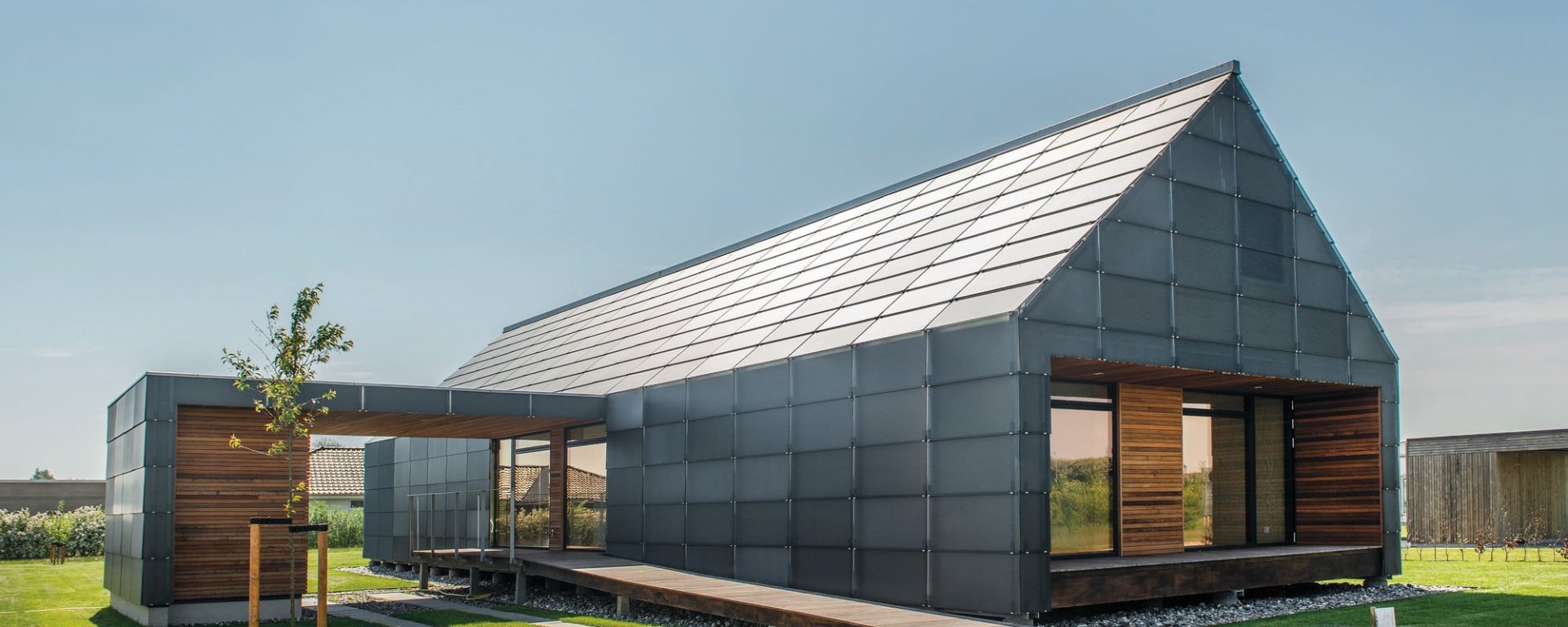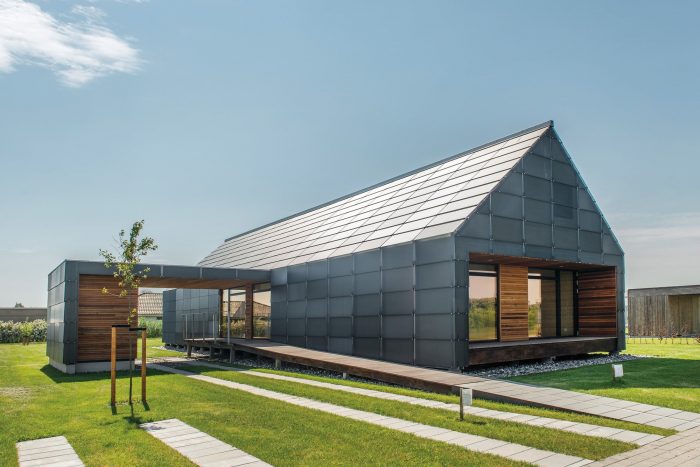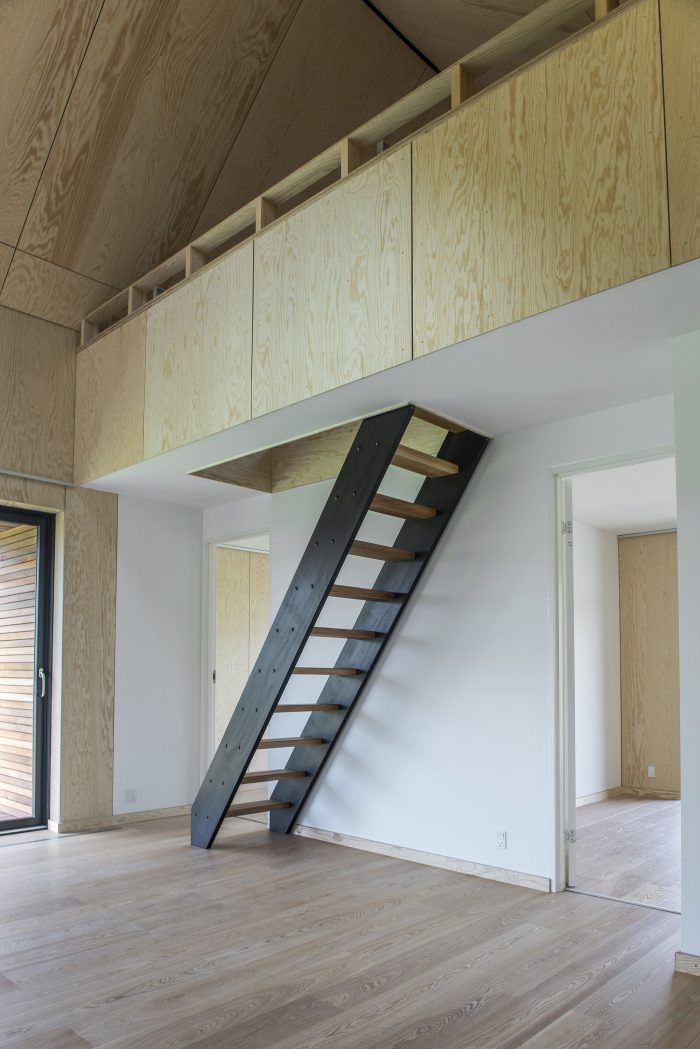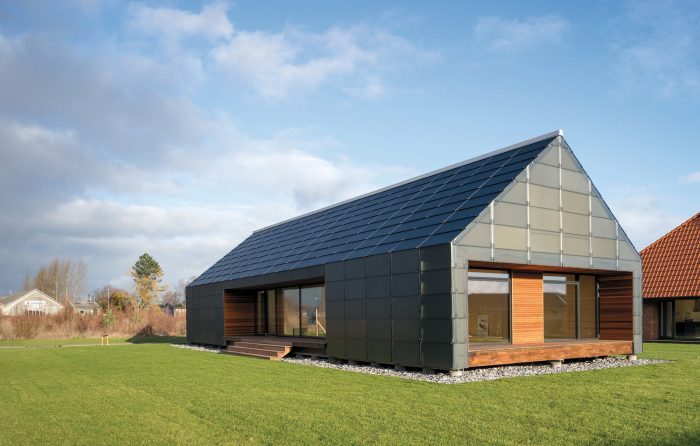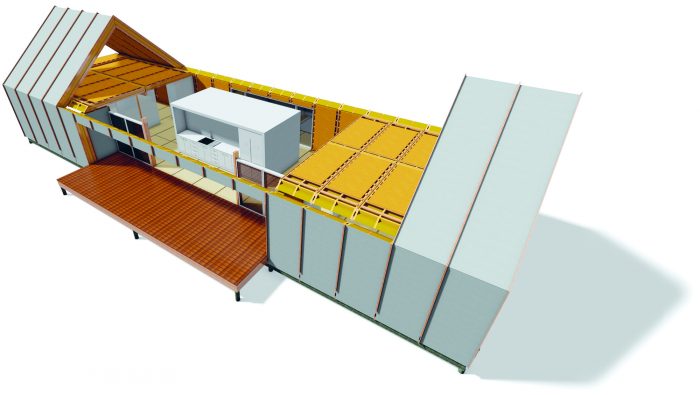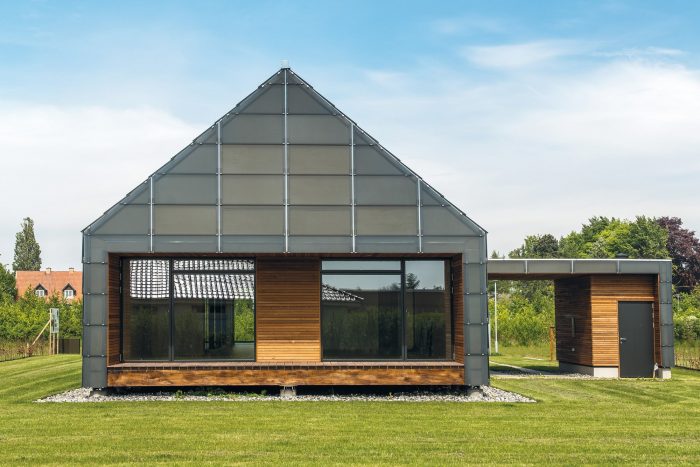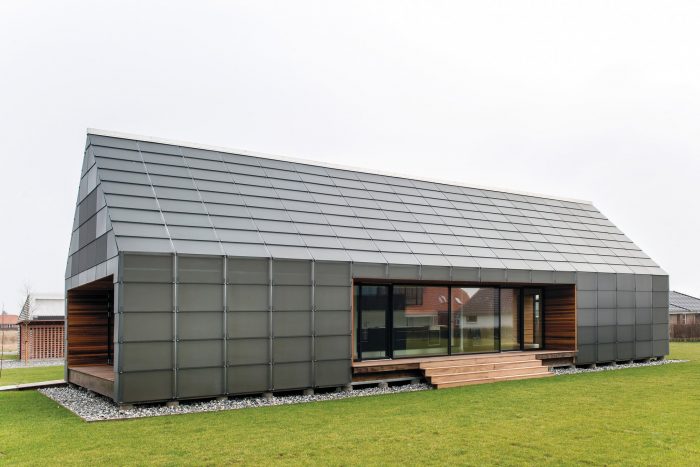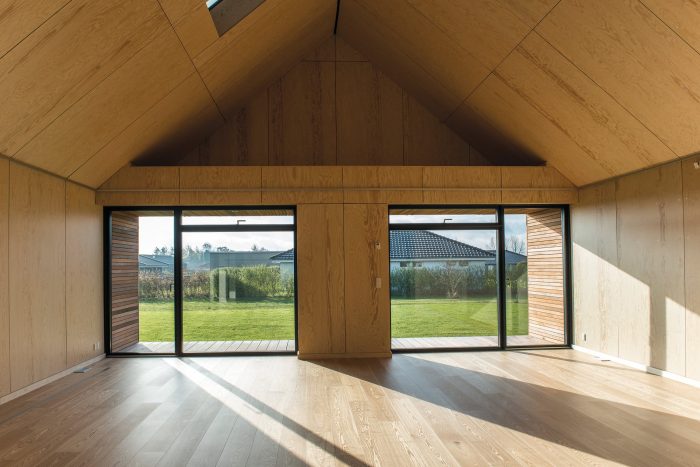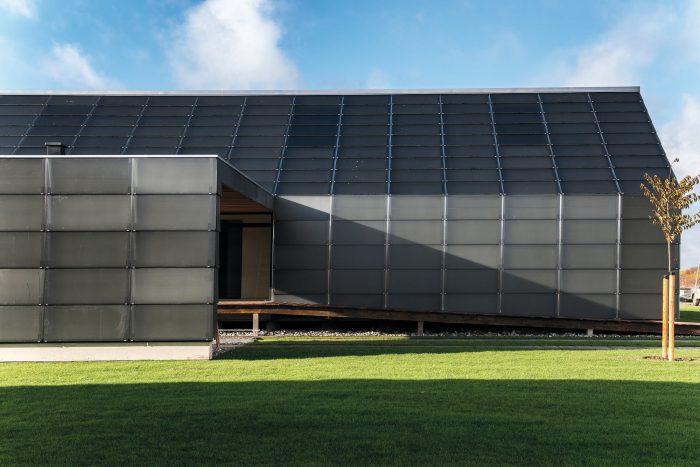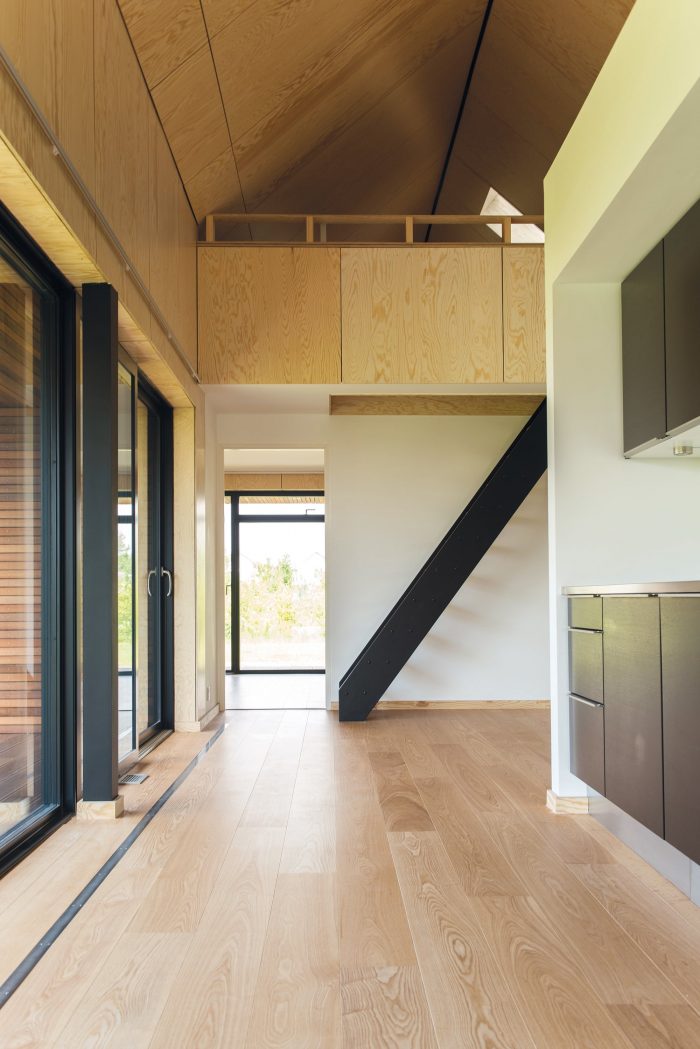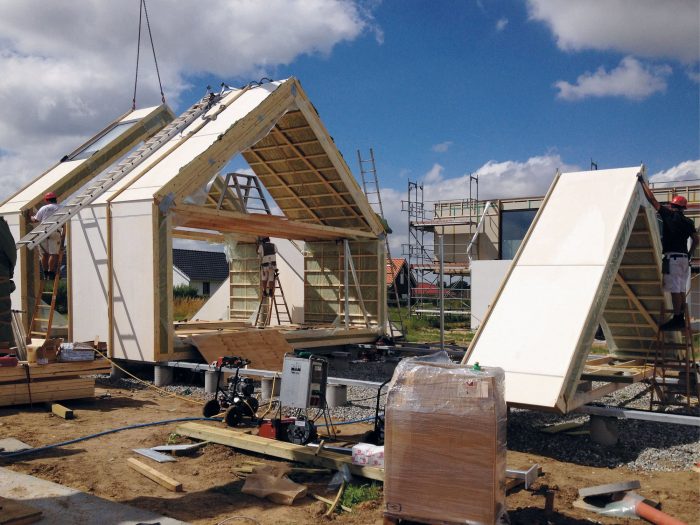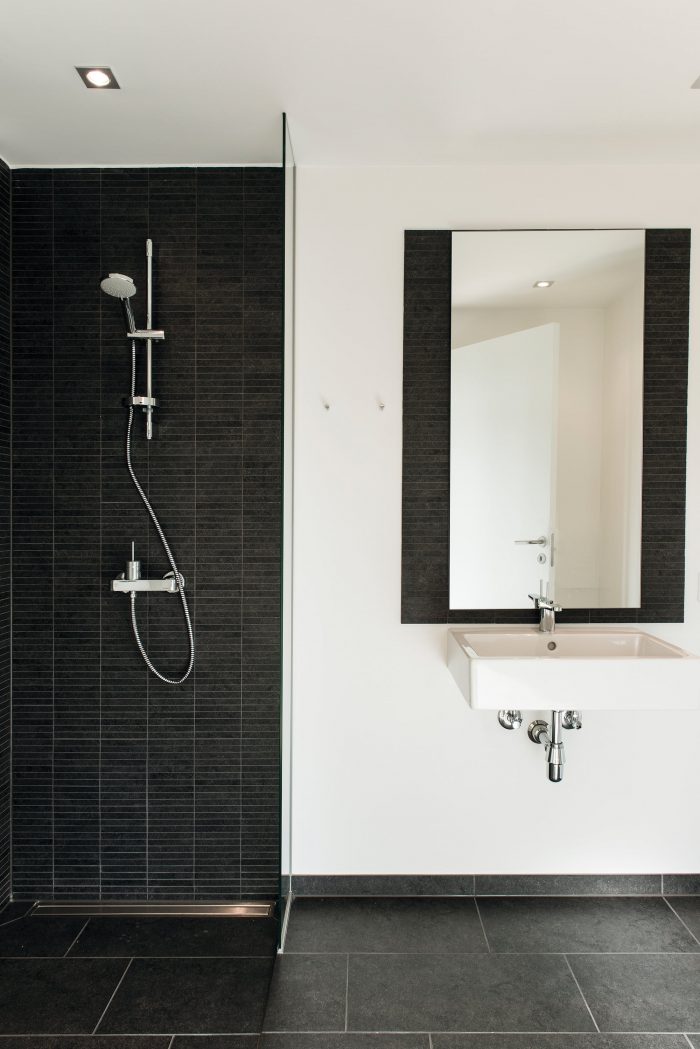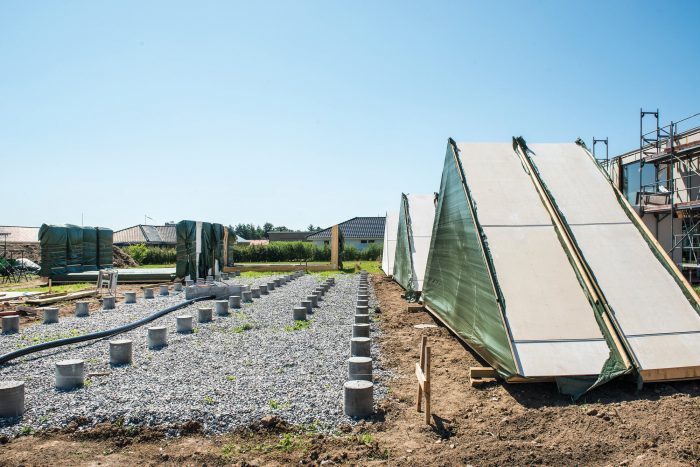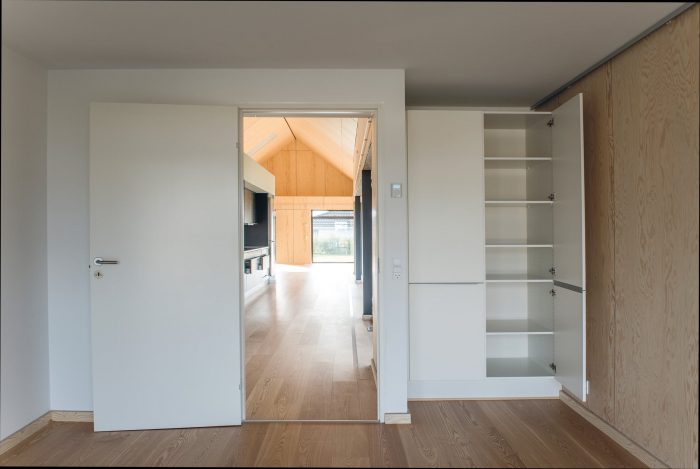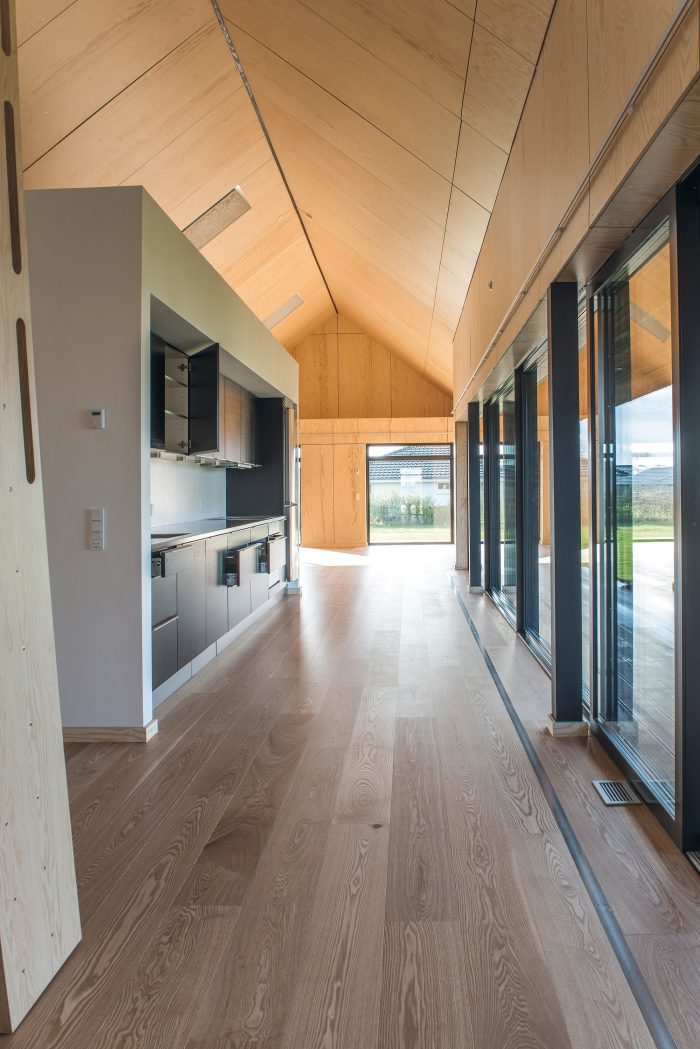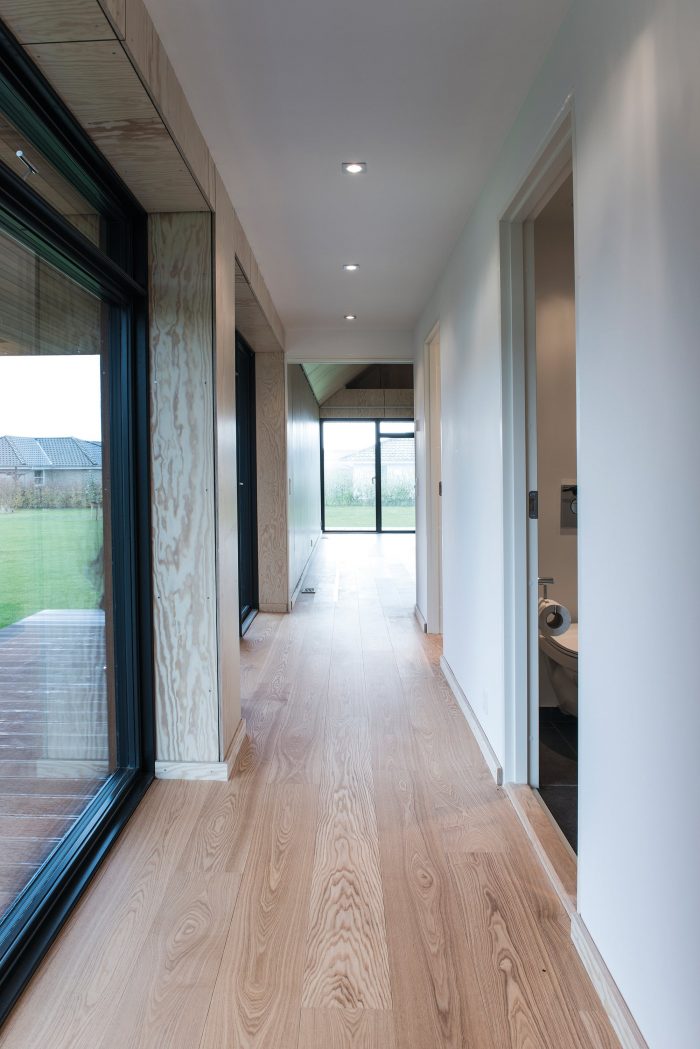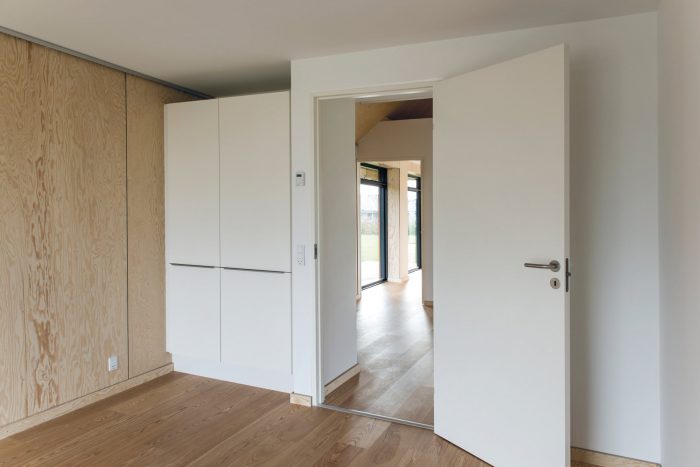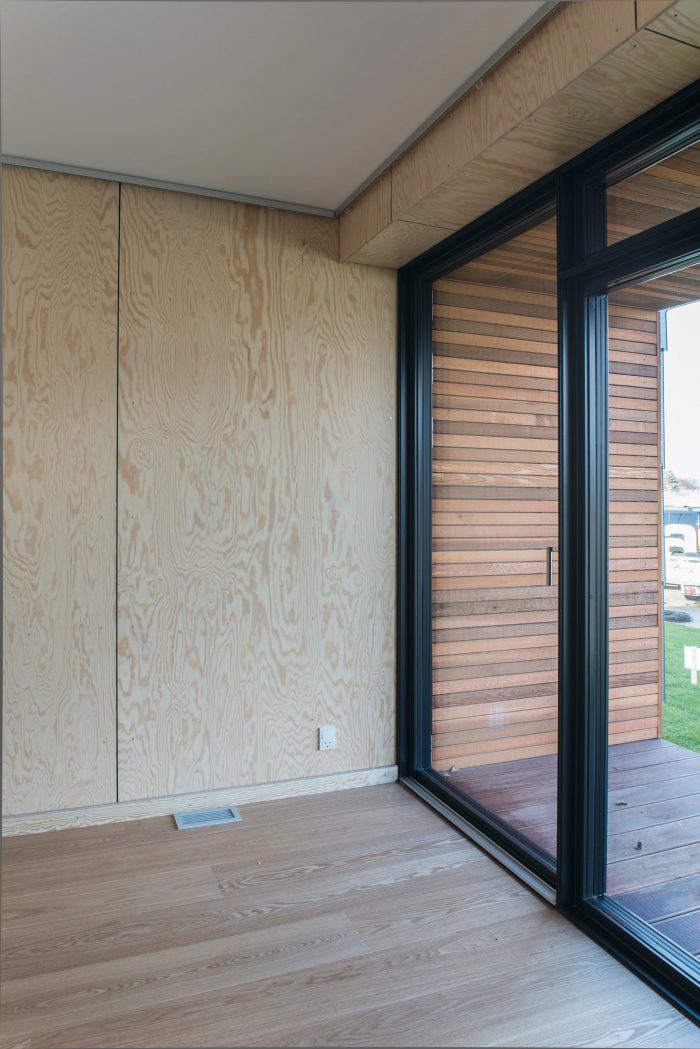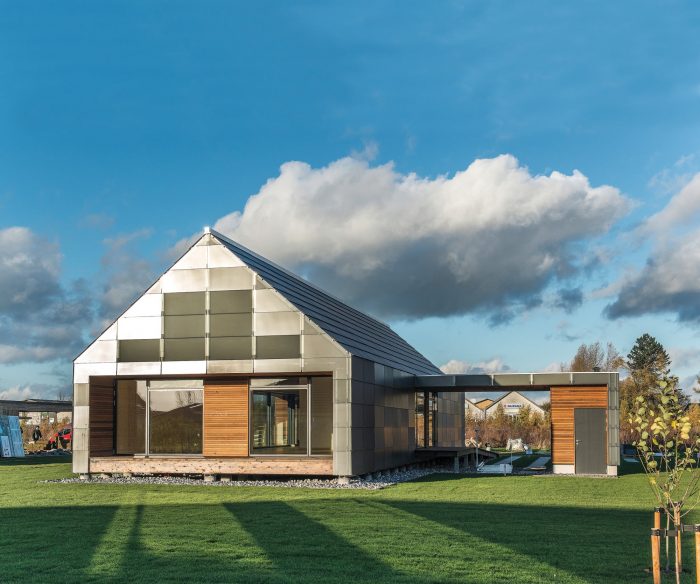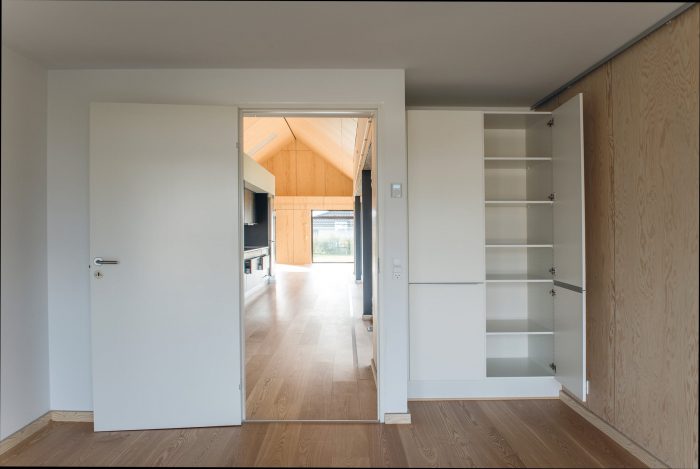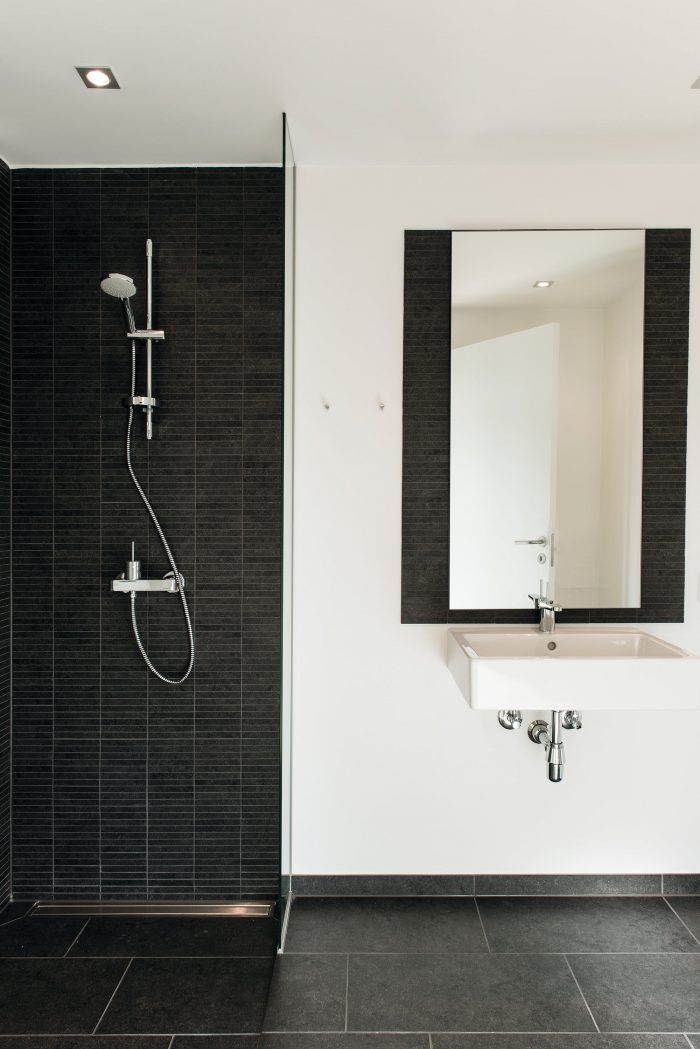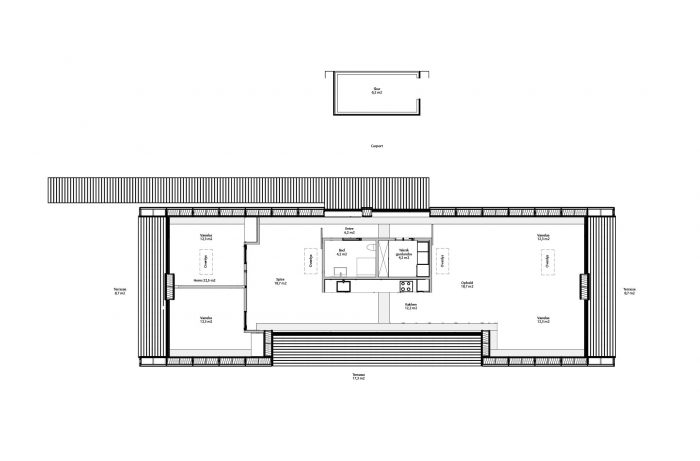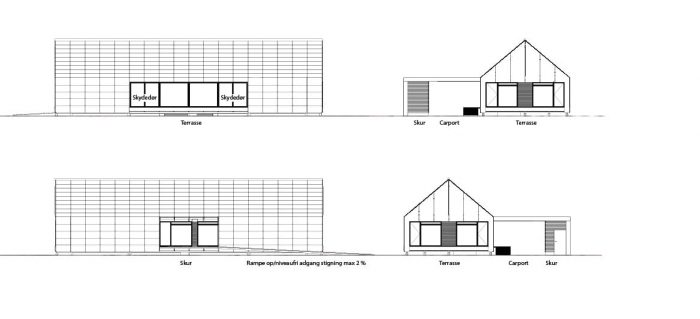免维护房屋(新材料)是一个大型开发项目的一部分。迷你CO2房屋。该项目共涉及六座独立式房屋,每座房屋都说明了在房屋建造、使用和维护过程中减少二氧化碳排放的各个方面。
The Maintenance-Free House (New Materials) is part of a large development project: The MiniCO2 Houses. The project involves a total of six detached houses, each of which illustrates various aspects of reducing CO2 emissions in the construction, use and maintenance of a house.
免维护房屋的重点是 “维护和使用寿命”,并研究当房屋建成后至少有150年的使用寿命,并且建筑围护结构在该使用寿命的前50年内不需要维护时,可以节省多少二氧化碳。房屋A是使用传统材料建造的,这些材料已经证明了其较长的使用寿命,而房屋B–这里描述的–是使用新材料建造的,这些材料预计会有很长的使用寿命。
The Maintenance-Free House focuses on “maintenance and service life” and examines how much CO2 can be saved when a house is built to have a service life of at least 150 years, and the building envelope needs no maintenance for the first 50 years of that service life. House A has been constructed using traditional materials, which have proved their long service life, and House B – described here – has been constructed using new materials, which are expected to have a long service life.
免维护房屋B被建造成一个长形房屋,有一个朝东的有盖入口正好位于建筑纵向的中心,有一个40度的倾斜屋顶。房子的内部被设计成一个木制的 “盒子”:一个连续的大房间,有开放的横梁,并配有低矮的封闭盒子。日光从四个天窗进入,从入口处,从全高的窗户和端墙上的门洞,以及从一个大约10米长的玻璃部分进入。
Maintenance-Free House B has been constructed as a long house with a covered east-facing entrance located exactly in the centre of the building’s longitudinal side and a 40-degree pitched roof. The interior of the house has been designed as a wooden “box”: one large continuous room with open beams and furnished with low closed boxes. Daylight enters through the four skylights, from the entrance area, from the full-height windows and doorways in the end walls, and from an approx. 10-meter long glass section.
免维护房屋B是用木头建造的,对于丹麦的气候来说,当目标是长期使用时,这也许是一个令人惊讶的选择。但是,丹麦有许多非常古老的木制结构,它们的长寿主要归功于良好的通风。房屋B的木质结构是以一种确保四面持续通风的方式建造的,包括在房屋下面,房屋是在一系列的垫子基础上升高的。
The Maintenance-Free House B has been built of wood, perhaps a surprising choice for the Danish climate when the goal is a long service life. But Denmark has many very old wooden structures, owing much of their longevity to excellent ventilation. The timber structure of House B has been created in a manner which ensures continuous ventilation on all sides, including under the house, which has been raised on a series of pad foundations.
胶合板、玻璃和空气
房屋的承重结构是木制的:18个由粘合的高强度胶合板组成的自承重框架,在一个部件工厂预制和组装,然后运到现场。这里的目标是实现高精度,避免因建筑工地典型的不准确而造成的任何损害。其目的是低维护和长使用寿命。这个过程将建筑的外部和内部框架结合在一起,创造了一个完全开放的建筑,没有柱子、横梁或拉力构件,保证了房屋的充分灵活性和持久的配置。
这座房子装有一个 “玻璃罩”,它环绕着屋顶和建筑的所有外墙,保护其木制结构不受风雨影响。玻璃罩是由再生玻璃制成的,原则上是不可破坏的。防护罩是一个连续的表面,没有被通风管打断–通过避免接头处的泄漏,再次确保延长使用寿命。
所有的门窗都是从外墙拉回来的,位于深层的遮蔽的壁龛中,这就提供了有效的保护。
房屋高出地面30厘米,建在垫层地基上。这个装置可以保护房屋不受雨水侵袭,同时确保房屋四面通风良好,无论是在建筑下面还是在其玻璃立面下面,在玻璃罩和木质结构之间的缝隙中都是如此。
在玻璃和木头之间的缝隙中产生的热量将被利用到扩展的通风方案中,热空气可以节省大量的二氧化碳。
Plywood, glass and air
The loadbearing structure of the house is of wood: 18 self-supporting frames of bonded, high-strength plywood prefabricated and assembled at a component factory and transported to the site. The goal here has been to achieve high precision and avoid any of the damage that can result from the typical inaccuracies of a construction site. The objective is low maintenance and a long service life. This process combines the building’s outer and inner frames in one unit , creating a completely open building without columns, beams or tension members, assuring the house full flexibility and a long-lasting configuration.
The house is fitted with a “glass shield”, which wraps around the roof and all façades of the building, protecting its wooden construction against rain and wind. The glass shield is made of recycled glass and in principle is indestructible. The shield is one continuous surface, unbroken by vent pipes – again ensuring extended service life by avoiding leakage from joints.
All windows and doors are pulled back from the façade and located in deep sheltered niches, which provides effective protection against the elements.
The house is raised 30 cm above the ground and built on pad foundations. This device protects the house against rain and at the same time ensures that it is well ventilated on all sides, both under the building and up under its glass façade, in the gap between the glass shield and the wooden construction.
The heat that is generated in the gap between glass and wood will be utilised in an extended ventilation solution, with the hot air saving significant amounts of CO2.
减少碳排放
免维护房屋B所使用的材料的碳排放量低于正常的普通房屋:参考房屋(3.5公斤二氧化碳/平方米/年,而50年内为5公斤二氧化碳/平方米/年)。这主要是由于大量使用了木材,这对整体的二氧化碳节约做出了积极的贡献,同时也是由于点状地基,与参考房屋的传统条状地基相比,它使用的高含量二氧化碳混凝土更少。另一方面,该房屋因使用玻璃而产生了较高的碳影响,部分原因是外墙的钢化玻璃,部分原因是其总的窗户面积,比标准房屋多出约50%。
Reducing carbon emissions
Carbon emissions from the materials used in the Maintenance-Free House B are less than from a normal average house: the Reference House (3.5 kg CO2/m²/year compared with 5 kg CO2/m²/year for a 50-year period). This is due mainly to the extensive use of wood, which contributes positively to the overall CO2 saving, but also to the point foundations, which use less high-content CO2 concrete than the traditional strip foundations of the Reference House. On the other hand, the house has a high carbon impact from the use of glass, due in part to the tempered glass in the façade and partly to its total window area, which is approx. 50% greater than in a standard house.
在免维护房屋B和参考房屋中,按50年计算的材料更换约占房屋总碳排放量的0.5公斤。观察者可能会感到惊讶,低维护的碳节约效果并不低于参考房的碳节约效果–但这是因为参考房在这方面实际上是相当好的。它是用砖建造的,几乎不需要维护,而它的其他二氧化碳密集型建筑元素–如地基、玻璃和矿棉绝缘–也很少需要维护。同时,其他可能需要维护或更换的元素–门、窗、室内表面等。- 就二氧化碳而言,它们相对 “轻”,因此对总的二氧化碳计算只有很小的影响。但同样值得注意的是,对于房子的主人来说,这些元素的低维护意味着更少的挫折感–以及在工人和材料上的现金节约。
In both the Maintenance-Free House B and the Reference House, the replacement of materials calculated over 50 years accounts for about 0.5 kg of the total carbon emissions from the house. It may surprise the observer that the carbon-saving effect of low maintenance is not less than that of the Reference House – but this is because the Reference House is actually fairly well placed in this respect. It has been built from brick, which is virtually maintenance-free, and its other CO2-intensive building elements – such as foundations, glass and mineral-wool insulation – rarely require maintenance. At the same time, the other elements that may require maintenance or replacement – doors, windows, interior surfaces, etc. – are relatively “light” in terms of CO2 and therefore have only a modest effect on the total CO2 calculation. But it is also worth bearing in mind that for the owner of the house, low maintenance on these elements means less frustration – and cash savings on workmen and materials.
总而言之,结果表明,如果建筑和设计–如免维护房屋B中所做的那样–导致整个房屋的使用寿命延长,它们将在总的预期使用寿命内减少碳排放。特别是如果这意味着避免了建造一个全新的房子的需要。
MiniCO2房屋开发项目
免维护房屋是在丹麦中部沿海城镇Nyborg建造的六个示范房屋之一。其中五所房屋研究了各种减少碳排放的方法;第六所房屋将这些经验汇集在一起。
All in all, the results show that if construction and design – as performed in the Maintenance-Free House B – lead to an extended service life for the house as a whole, they will reduce carbon emissions over the total expected service life. Especially if it means avoiding the need to build a completely new house.
The MiniCO2 Houses development project
The Maintenance-Free House is one of six demonstration homes built in the coastal town of Nyborg in central Denmark. Five of the houses examine various ways of reducing carbon emissions; the sixth house brings these experiences together.
多年来,建筑业为减少二氧化碳排放所做的努力–不是没有原因的–都集中在供暖能源上,因此也集中在气密性和绝缘上。然而,随着国家和欧盟在这方面的建筑要求越来越严格,研究该行业如何减少碳排放–例如,在材料和用户行为方面–也变得很重要。
因此,MiniCO2房屋开发项目的主要目标是减少房屋建造、运行和维护过程中的二氧化碳排放。
For many years, the efforts of the building industry to reduce CO2 emissions – not without reason – have focused on energy for heating and therefore also on airtightness and insulation. However, as national and EU building requirements become ever stricter in this area, it becomes relevant to examine how the industry can also reduce carbon emissions – for example, in terms of materials and of user behaviour.
The main objective of the MiniCO2 Houses development project is thus to reduce CO2 emissions in the construction, operation and maintenance of a house.
这六座房屋具有相同的总体原则。
– 建筑类型。单家独户的独立住宅
– 面积:130至172平方米
– 能源准则。丹麦2015年标准
– 预算。普通经济型
– 建筑设计。广泛的吸引力
– 未来。实验完成后出售房屋
The six houses share the same overall principles:
• Building type: Single-family detached home
• Size: 130 to 172 m²
• Energy guidelines: Danish 2015 Standards
• Budget: Normal economy
• Architectural design: Broad appeal
• Future: Sale of the house after completed experiment
Architects: Arkitema Architects
Area : 156 m²
Year : 2013
Photographs : Jesper Ray, Helene Høyer Mikkelsen
Contractor : Enemærke & Petersen A/S
Consultant : The Danish Technological Institute, Masonry, Building And Construction
Developer : Realdania Byg A/S
Engineer : Sloth Møller
Knowledge Partners : Danish Building Research Institute (Aalborg University)
City : Nyborg
Country : Denmark

